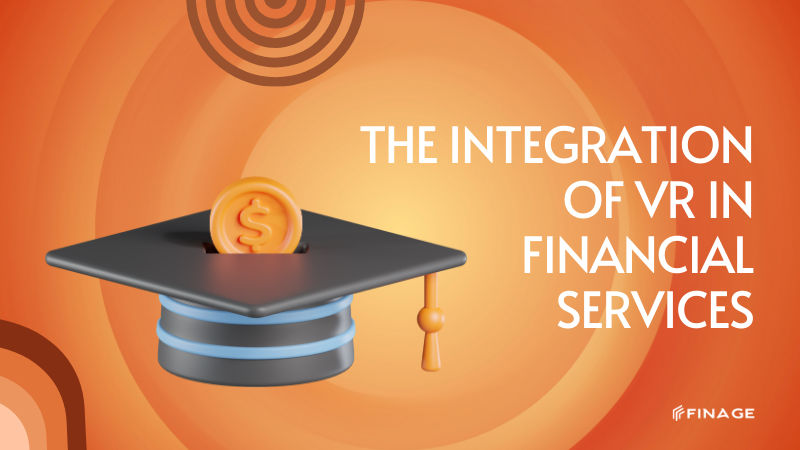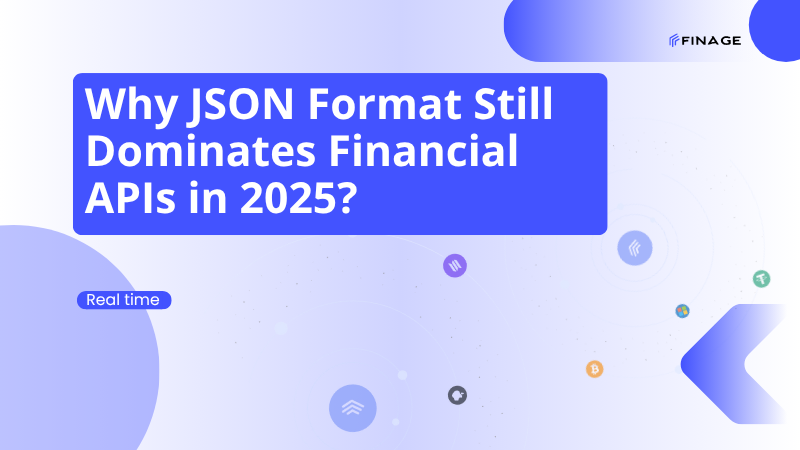The Integration of VR in Financial Services
6 min read • April 1, 2024

Introduction
Virtual Reality (VR) technology, once relegated to the realms of science fiction and gaming, is now emerging as a transformative force across diverse industries, including financial services. The immersive and interactive capabilities of VR present financial institutions with innovative avenues to engage with customers, elevate service delivery, and optimize internal operations. This blog post embarks on an exploration of the integration of VR in financial services, unraveling its applications, benefits, challenges, and potential future developments in this dynamic and exciting field.
In the realm of financial services, VR is redefining customer interactions. The blog will delve into how VR applications create immersive virtual environments for clients, enabling them to visualize financial data, explore investment portfolios, and engage in virtual consultations with advisors. This personalized and interactive approach not only enhances customer engagement but also provides a novel means of financial education and decision-making.
The benefits of incorporating VR in financial services extend beyond customer engagement. The post will examine how VR is utilized internally for training purposes, simulating real-world scenarios for financial professionals to enhance their skills and decision-making abilities. VR-based training programs offer a risk-free environment for employees to refine their expertise in areas such as risk management, customer service, and compliance.
While VR presents exciting opportunities, it also comes with challenges, including the need for widespread adoption, concerns about data security, and the cost of implementing VR solutions. The blog will address these challenges, providing insights into the considerations financial institutions must navigate to successfully integrate VR into their operations.
Looking ahead, the post will explore potential future developments in the field of VR in financial services. From expanded applications in virtual banking to enhanced virtual collaboration tools for remote financial teams, the post aims to provide readers with a forward-looking perspective on the evolving role of VR in reshaping the financial services landscape.
By offering a comprehensive exploration of the applications, benefits, challenges, and future possibilities, the blog aims to provide a nuanced understanding of how VR is transforming and innovating the way financial services are delivered and experienced.
Table of Contents
- Exploring VR in Financial Services
- Definition and Capabilities of VR
- Early Adoption in the Financial Sector
- Applications of VR in Finance
- Virtual Financial Advising and Consultations
- VR for Financial Education and Training
- Enhancing Customer Experience with VR
- Immersive Banking Environments
- Interactive Investment and Market Analysis
- Operational Efficiency through VR
- VR in Financial Data Analysis
- Internal Training and Collaboration
- Challenges in Implementing VR
- Technological and Cost Barriers
- User Accessibility and Adoption
- Regulatory and Security Aspects
- Compliance with Financial Regulations
- Ensuring Data Security in VR Platforms
- The Future of VR in Financial Services
- Emerging Trends and Innovations
- Potential for Widespread Adoption
- Conclusion
- References
Exploring VR in Financial Services
Definition and Capabilities of VR
Virtual Reality (VR) is a simulated experience that can be similar to or completely different from the real world, offering immersive and interactive environments.
Early Adoption in the Financial Sector
Financial institutions are beginning to explore VR's potential, experimenting with ways to enhance customer engagement and streamline operations.
Applications of VR in Finance
Virtual Financial Advising and Consultations
VR enables virtual face-to-face meetings, allowing financial advisors to conduct consultations in a more engaging and personal manner, regardless of physical location.
VR for Financial Education and Training
VR can be used to create interactive and realistic financial education programs, helping customers and employees better understand complex financial concepts.
Enhancing Customer Experience with VR
Immersive Banking Environments
VR can create immersive banking environments, allowing customers to perform banking activities in a virtual space that replicates physical branches.
Interactive Investment and Market Analysis
Investment firms can use VR for interactive market analysis, providing customers with a 3D visualization of crypto market trends and investment scenarios.
Operational Efficiency through VR
VR in Financial Data Analysis
VR technology can transform financial data analysis, enabling analysts to interact with complex data sets more intuitively and efficiently.
Internal Training and Collaboration
VR can enhance internal training programs and collaborative efforts, offering realistic simulations and environments for employee development.
Challenges in Implementing VR
Technological and Cost Barriers
The implementation of VR in financial services faces technological challenges and cost barriers, particularly regarding the development of VR content and platforms.
User Accessibility and Adoption
Ensuring user accessibility and encouraging the adoption of VR technologies among customers and staff is crucial for its success.
Regulatory and Security Aspects
Compliance with Financial Regulations
Integrating VR into financial services must consider compliance with existing financial regulations and standards.
Ensuring Data Security in VR Platforms
Data security is paramount in VR platforms, especially when handling sensitive financial information and transactions.
The Future of VR in Financial Services
Emerging Trends and Innovations
The future of VR in financial services may include more advanced and user-friendly VR platforms, integrating AI and machine learning for personalized experiences.
Potential for Widespread Adoption
As technology advances and becomes more cost-effective, the potential for widespread adoption of VR in financial services increases.
Conclusion
The integration of Virtual Reality (VR) into financial services is in its nascent stages, yet it harbors substantial potential for revolutionizing both customer experiences and operational processes within the industry. While the adoption of VR in finance is currently limited, the technology can offer immersive and interactive solutions that go beyond conventional banking experiences. As VR technology matures and addresses current challenges, it could very well become a standard tool in the financial industry, reshaping how customers interact with financial services and how professionals conduct their operations.
In terms of customer experiences, VR has the potential to create engaging and personalized interactions. Virtual environments can be designed to simulate real-world banking scenarios, providing customers with a more immersive understanding of financial products and services. Virtual branches could offer an alternative to physical locations, enabling customers to attend virtual consultations, and seminars, or even conduct transactions within a three-dimensional digital space. This not only enhances accessibility but also contributes to a more engaging and educational customer experience.
On the operational side, VR can streamline and enhance various financial processes. For instance, VR technology can be employed in risk management simulations, allowing financial professionals to navigate complex scenarios and make informed decisions in a controlled virtual environment. Virtual workspaces could facilitate collaborative efforts among global teams, fostering efficient communication and project management. Additionally, VR applications could aid in staff training by providing realistic, hands-on simulations of financial procedures and compliance protocols.
Despite its potential, the integration of VR into financial services faces challenges such as hardware costs, technical limitations, and the need for widespread adoption. However, as the technology continues to advance, these barriers are likely to diminish, making VR more accessible and practical for widespread implementation in the financial industry. Overcoming these challenges could lead to a future where VR becomes an integral tool for customer engagement, staff training, and operational efficiency in the financial sector.
In conclusion, while the integration of VR into financial services is currently in its early stages, the potential benefits it holds for transforming customer experiences and operational processes are considerable. As VR technology matures and addresses current obstacles, it could evolve into a standard tool within the financial industry, contributing to a more immersive, efficient, and innovative financial ecosystem.
You can get your Real-Time and Historical Market Data with a free API key.
Build with us today!
Claim Your Free API Key Today
Access stock, forex and crypto market data with a free API key—no credit card required.

Stay Informed, Stay Ahead
Finage Blog: Data-Driven Insights & Ideas
Discover company news, announcements, updates, guides and more


